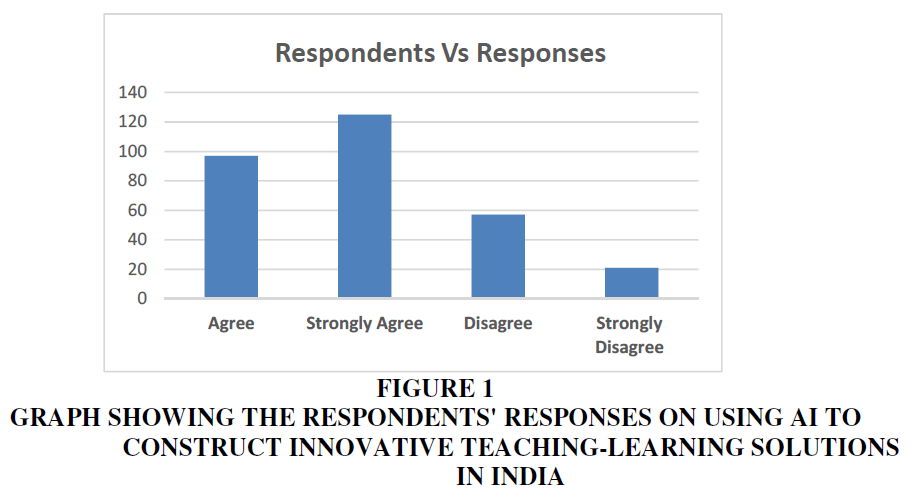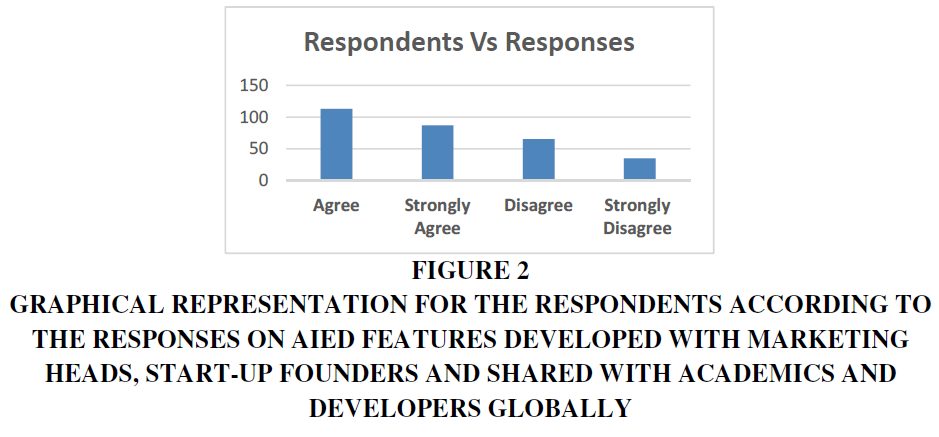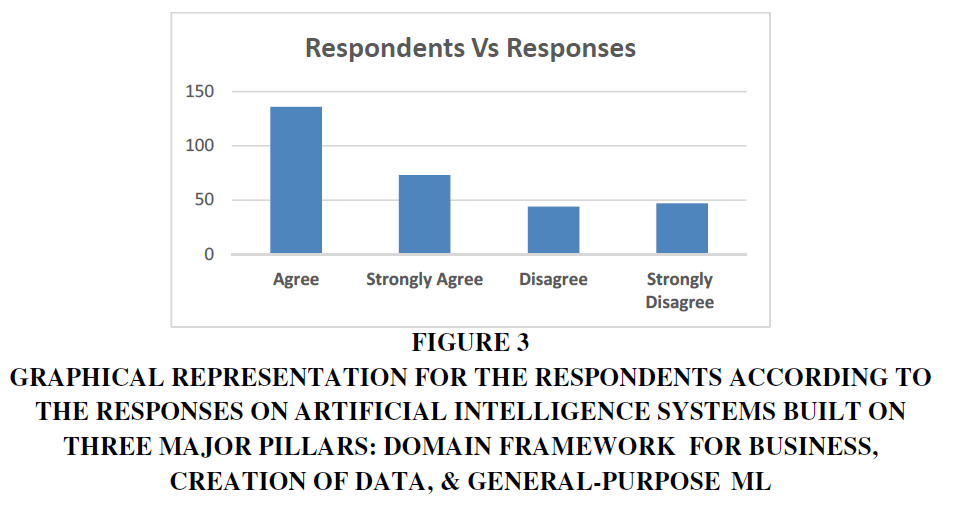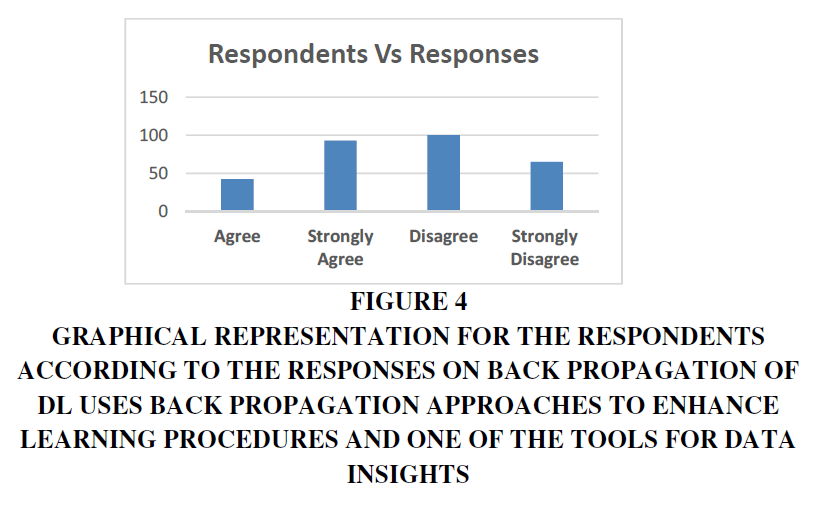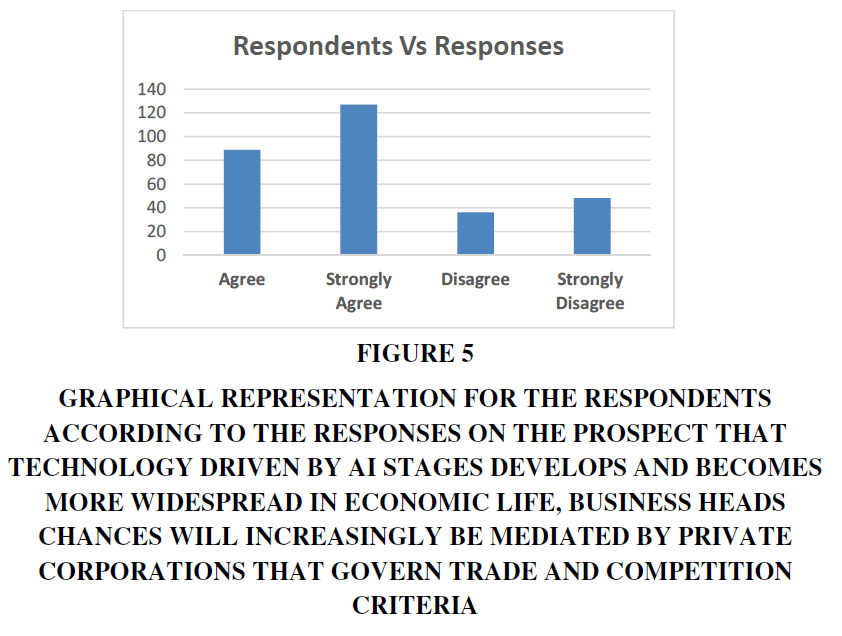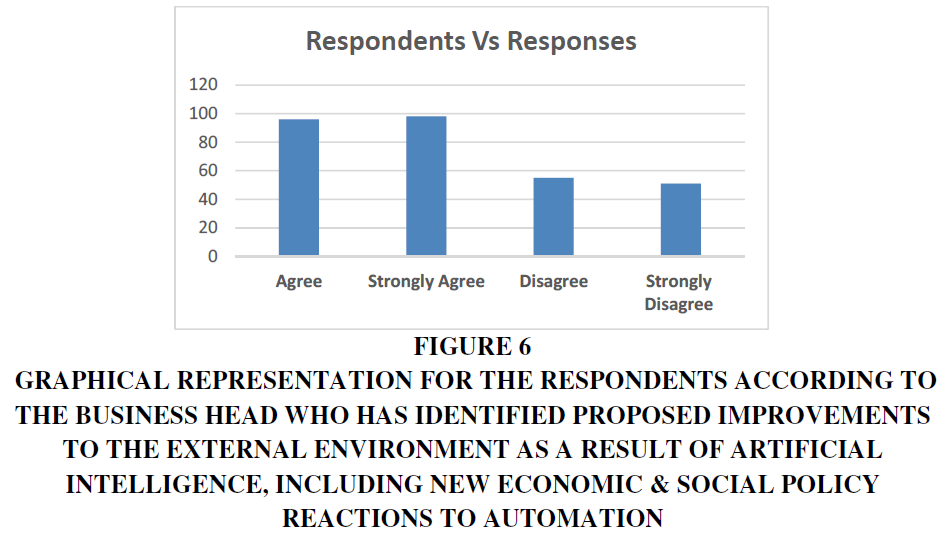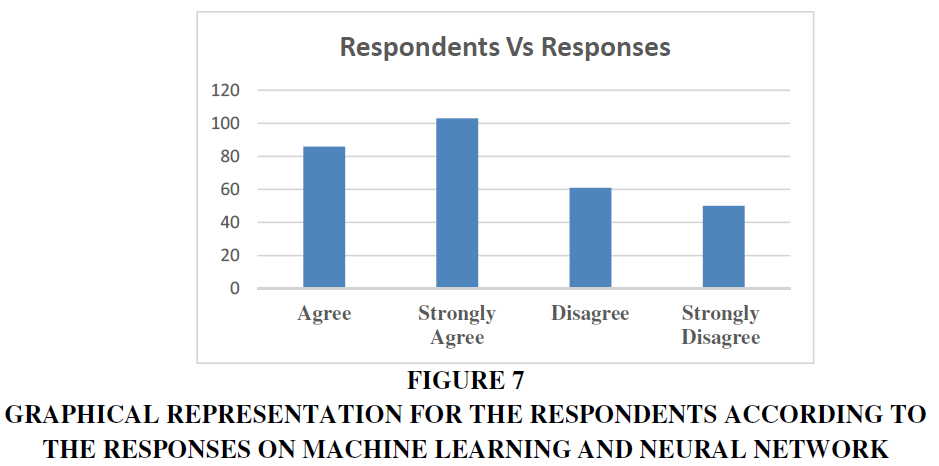Research Article: 2022 Vol: 26 Issue: 2
A Marketing Survey on Precision Learning using Artificial Intelligence and Its Impact In India
Kishore Kunal, Loyola Institute of Business Administration
S. Shyni Carmel Mary, Loyola Institute of Business Administration
Mj Xavier, Loyola Institute of Business Administration
C. Joe Arun, Loyola Institute of Business Administration
Citation Information: Kunal, K., Carmel Mary, S.S., Xavier, M.J., & Arun, C.J. (2022). A marketing survey on precision learning using artificial intelligence and its impact in India. Academy of Marketing Studies Journal, 26(2), 1-10.
Abstract
In major Indian cities like Delhi, Mumbai, Kolkata, & Chennai, the survey was conducted to people who were interested in starting their own business based on artificial intelligence and related area. The growing prevalence of big data and artificial intelligence (AI) has shifted markets, politics, businesses, and society into a new era. It has a direct effect on the field of research. Artificial Intelligence (AI) is useful for analysing vast and unstructured data collections. The most recent literature on data science (DS) methods for entrepreneurship marketing skills has been studied in this research. The impact of AI precision learning on India's business environment has been investigated in this paper. Finally, the new discipline's future directions have been examined for upcoming business which required attention of marketers and the positioning of the same in Ed-Tech sector.
Keywords
Artificial Intelligence, Machine Learning, Education, Entrepreneur, Indian Economy, Business.
Introduction
It is predicted that artificial intelligence (AI) will change our world. Human intelligence (HI) can be supplemented and enhanced by HI capable of performing high-level cognitive functions such as thinking, analysing, learning, problem-solving, as well as decision-making in combination with advances in data collection and dissemination, analytics, and computer processing power. Artificial intelligence (AI) can be the most major technological breakthrough of our era, with the capacity to affect virtually every aspect of human life. Andrew Ng, the co-founder of Coursera and former head of Baidu AI Group / Google Brain, relates the influence of artificial intelligence to that of electricity one hundred years ago. Since many businesses invest extensively in cognitive and artificial intelligence technologies, worldwide investments are predicted to increase at a CAGR (compound annual growth rate) of AI refers to a group of technologies that allow robots to function with more intelligence and mimic human sense, cognition, and behaviour in many situations. Audio processing & computer vision & can effectively perceive the environment around them by collecting as well as processing pictures, sound, and voice. The data collected by AI systems can be analysed and interpreted using tools such as natural language processing (NLP) as well as inference engines. Expert systems and inference engines are examples of technology that AI systems can use to act, as well as activities in the physical world. Such human abilities are enhanced by learning from one's mistakes and adjusting with time. As AI systems get more sophisticated, they find a greater range of applications to improve these capabilities throughout businesses.
When it comes to artificial intelligence, India has a big stake because it is both the world's fastest-growing economy and its second largest population. While presenting his 2018–2019 budget, the Hon'ble Minister of Finance committed NITI AAYOG to establishing an AI- focused national research and development programme, recognising AI's potential to change economic systems as well as the requirement for India to come up with a strategy and approach to incorporate that potential in the country. NITI AAYOG has developed a three-pronged strategy to achieve the specified objective. Additionally, the company is focusing on establishing an India-wide strategy for the development of a sustainable artificial intelligence ecosystem, as well as partnering with a diverse range of professionals and stakeholders. AI projects in agriculture & healthcare have focused on NITI AAYOG's collaborations with leading AI technology firms. These initiatives, which are in different phases of execution, and our relationships with many of the world's finest organizations and professionals, have provided a greater understanding of how national AI models are developed and implemented across the world.
The purpose of this research is to create the platform for the implementation of a National Artificial Intelligence Strategy with the required business perspective. Several useful resources are included in this document. Survey assessments have been applied in this work to understand the usefulness of AI and its scope of future implementation for business purpose. This article is meant to be a pre-requisite for anyone interested in doing business and their firm’s marketing using AI strategy.
Impact on Indian Economy
Artificial intelligence (AI) has the potential to add considerable contribution in a variety of industries around the world, and it is likely to become a major source of competitive edge for enterprises in the long-term. There is plethora of opportunities related to business and it will set the tone of new era of Business demands. Some of the field where it is going to impact the most has been listed below.
Healthcare
AI in healthcare can help remove significant barriers in determining healthcare facilities in remote areas with poor connectivity and a scarcity of healthcare professionals. Implementing AI-driven diagnostics, personalised medicine, timely pandemic identification, and imaging diagnostics can all help achieve this objective. There is huge potential of business to ramp up in tier 2 and tier 3 towns of India. Telemedicine is getting flourished in remote areas.
Agriculture
AI can transform the food industry and meet rising food demand. This technology may also be used to overcome problems for example a lack of accurate market research, a scarcity of effectively irrigated areas, misuse & overuse of fertilizers, pesticides, & other chemicals(Muller&Bostrom,2016). Real-time suggestions, improved pest detection, and the ability to predict crop prices are just a few examples of how technology may improve crop yields.
The new tech- based agriculture-based start-up is flourishing in India which is primarily attributed to technological advancement of AI resulted to revenue in this field.
Transportation And Logistics
For example, automated ride-sharing fleets, driver support systems, as well as predictive engine monitoring could be used in this field. Start-ups like Zomato, Loginext is using AI to expand their horizon.
Manufacturing
With flexible and responsive technological systems that automate processes & machines and react to changes or unforeseen conditions by making intelligent decisions, AI- based solutions are projected to assist most manufacturing industries.
Energy
Modelling and prediction of the energy system could be used to minimize uncertainty and improve power balance and usage efficiency in the energy business. By allowing energy storage using intelligent grids made possible by smart meters, AI in renewable energy systems can increase the reliability & affordability of photovoltaic (PV) energy.
Education And Skill
Problems with educational quality & access in India's education system can be addressed by artificial intelligence (Greve&Salaff,2003). Students' learning experiences can be personalised and enhanced by applying artificial intelligence. Administrative processes can be automated and accelerated, and the need for student involvement to prevent dropouts or increase vocational training can be forecasted.
Literature Review
This research applied data science approaches to respond to the research questions regarding different aspects of business based entrepreneurial qualities, procedures, & marketing. Revenue generation using funding (via crowd funding & venture capital, invention of product, inventor disambiguation, as well as entrepreneurial qualities have all been studied using machine learning and/or text analytics. Both the data frontier as well as the knowledge frontier is advanced by these studies' usage of relevant information and data and the implementation of unique approaches to already available data and/or challenges. It will set tone for (Wang et al; 2017). Pioneered the integration of DS into the study onentrepreneurial social networks, which was traditionally focused on case studies. They also showed how adding more quantitative and qualitative data could help to offset the concerns about representativeness that come with social media data. It will further have to be examined for marketing (Hartmann et al; 2016). Achieved a better level of integration between DS & entrepreneurship. They developed a collection of data-driven business models which have been implemented by start-ups that rely significantly on data as a source of business. Six kinds of these business models amongst start-ups established a framework for understanding how these businesses were built around the use of data as their main resource (Hoornaert et al; 2017) Developed a machine learning (ML) model to forecast the success and failure of crowd sourced business or product concepts using the three C's: the idea's substance, the identity of the person who suggested it, and the reaction of the public to the concept. A non-linear supervised method eventually finds the features that most accurately reflect the uniqueness and performance of a concept or theory throughout implementation (Courtney et al; 2017) Investigated how three distinct forms of signals from diverse sources inside the system interact to assess the viability of a given proposal: a start-up’s direct operations with regard to a suggested idea and/or product (the material), its qualities, and third- party endorsements. The researchers utilised a new sentiment analytical method to identify the underlying tone of textual statements from backers.
Precision Learning With Ai
The AI wave has swept the globe in recent years. Individualised and precise predictions and decision-making can be achieved through AI(Stuart &Abetti,1987) .AI is a domain of technology concerned with the study and development of concepts, technologies, as well as systems & applications capable of simulating, extending, and increasing human intelligence. In the field of education, precision learning is a theory and practise that is built on big data analysis. The first and most significant aspect of precision education is identifying and accepting diversity and providing focused training and instruction associated with big data technology, which is categorised depending on individual traits. These affirmations are an excellent way to strengthen their assets, correct their flaws, and increase their acceptance of learning. Plethora of business-related opportunities has been examined in this paper and it is definitely a change agent for Ed-tech fields where education is adopting the hybrid mode.
Problem Statement
Most evaluations of AI technologies are either bibliometric analyses of a single journal or cross-journal analyses with a shorter time. A problem of a single-journal bibliometric study is that AIEd (Artificial Intelligence Education), as suggested, research is not comprehensive (Hisrich et al; 2007). The disadvantage of a shorter timeframe is that it focuses exclusively on recent AIEd breakthroughs. A bibliometric analysis of several journals released over a considerable length of time is regarded as important to understand the evolution of AIEd research during the last two decades. As a result, the topic of our study is "The Impact of AI (Artificial Intelligence) on Precision Learning in India."
Objectives
The major objectives of the study are:
1. To investigate recent primary paradigms in AIEd literature and their effects on human skills.
2. To find the emerging themes in AI research that is reliable for business through social development and inclusive growth.
3. To evaluate the business impact of AI on India.
Research Methodology
This research is based on the responses provided by 200 start-up-oriented individuals with a sustaining questionnaire survey to assess the impact of AIEd in Indian society. Most of these respondents are 26-36 years old with an average income level of 4 to 8LPAIn-depth interviews with 100 undergraduate students who want to be entrepreneurs and want to start their own ventures are also included in this research to understand the influence of AI in precision education better. The questionnaire survey was done online in the last quarter of 2020 via Google forms and other social media platforms Figure 1 & 2.
Figure 1 Graph Showing the Respondents' Responses on Using AI to Construct Innovative Teaching-Learning Solutions in India
Figure 2 Graphical Representation for the Respondents According to the Responses on Aied Features Developed with Marketing Heads, Start-Up Founders and Shared with Academics and Developers Globally
The questionnaire survey is summarized as below.
1. The use of AI in building innovative teaching-learning solutions is getting popular in India and its impact on business.
(a) Agree: 97
(b) Strongly Agree: 125
(c) Disagree: 57
(d) Strongly Disagre
2. AIEd features developed with marketing heads, start-up founders and shared with academics and developers globally. It is
(a) Agree: 113
(b) Strongly Agree: 87
(c) Disagree: 65
(d) Strongly Disagree: 3
3. Artificial intelligence systems are built on three major pillars, which are domain framework for business, creation of data, & general-purpose ML.
(a) Agree: 136
(b) Strongly Agree: 73
(c) Disagree: 44
(d) Strongly Disagree: 47
4. DL uses back propagation approaches to enhance learning procedures and it is widely used for marketing analytics as a tool Figure 3 & 4.
Figure 3 Graphical Representation for the Respondents According to the Responses on Artificial Intelligence Systems Built on Three Major Pillars: Domain Framework for Business, Creation of Data, & General-Purpose ML
Figure 4 Graphical Representation for the Respondents According to the Responses on Back Propagation of DL Uses Back Propagation Approaches to Enhance Learning Procedures and one of the tools for data Insights
(a) Agree: 42
(b) Strongly Agree: 93
(c) Disagree: 100
5. With the prospect that technology driven by AI stages develops and becomes more widespread in economic life, business heads chances will increasingly be mediated by private corporations that govern trade and competition criteria Figure 5 & 6.
Figure 5 Graphical Representation for the Respondents According to the Responses on the Prospect that Technology Driven by AI Stages Develops and Becomes More Widespread in Economic Life, Business Heads Chances will Increasingly be Mediated by Private Corporations that Govern Trade and Competition Criteria
Figure 6 Graphical Representation for the Respondents According to the Business Head who has Identified Proposed Improvements to the External Environment as a Result of Artificial Intelligence, Including new Economic & Social Policy Reactions to Automation
(a) Agree: 89
(b) Strongly Agree: 127
(c) Disagree: 36
(d) Strongly Disagree: 48
Business heads has identified proposed improvements to the external environment as a result of artificial intelligence, including new economic & social policy reactions to automation.
(e) Agree: 96
(f) Strongly Agree: 98
(g) Disagree: 55
(h) Strongly Disagree: 51
Machine learning and neural network breakthroughs are combining with cheaper sensors and easier ways of gathering and preparing training data to encourage new AI start-up activity Figure 7.
Figure 7 Graphical Representation for the Respondents According to the Responses on Machine Learning and Neural Network Breakthroughs are Combining with Cheaper Sensors and Easier ways of Gathering and Preparing Training Data to Encourage New AI Start-Up Activity
(i) Agree: 86
(j) Strongly Agree: 103
(k) Disagree: 61
(l) Strongly Disagree: 50
Results and Discussion
A thorough study has been conducted here to enhance the extensive literature and give an initial analysis of a distinct dataset applying a valuable collection of questionnaires to show the broad objectives indicated above. Several case studies have already been conducted with expert opinion to demonstrate the impact of AI in the future era Stuart & Abetti (1987). The questionnaire survey used in this study is a new method of conducting such research. Increasing technical and economic advancements have a significant and quantifiable impact on the need for entrepreneurial abilities. The study's sample size was confined to people who are currently involved in entrepreneurship or aspire to be one in the future, resulting in a reduced number of participants. The data sample is acquainted with an average of 15% error for each response category, representing the statistical uncertainty in a reported measurement. Greater sample size can help both the identification of AIEd and the evaluation of its effect Hisrich et al., (2007). There should be further research done to see whether other aspects can affect students' learning experiences in future studies.
Conclusion
India's potential in artificial intelligence research is quite limited, both in terms of numbers and, more significantly, in terms of quality. Instead of organizational competency, individual brilliance is the driving force behind academic research, which is restricted to a small number of educational institutions. Exacerbating the problem is the lack of financial support for AI development from the private sector. Despite some encouraging recent developments, like the Karnataka government's aim to construct a Centre of Excellence in Artificial Intelligence in partnership with NASSCOM, significant work needs to be covered.
Artificial Intelligence (AI) and other cutting-edge technologies are reshaping how people work and what skills they need to succeed in the future workforce. The plants will face changes and challenges from both the demand and supply sides: demand for capabilities for jobs that don't even exist yet, as well as decreased demand for some of the jobs that could be automated, and a supply of newly minted STEM graduates, many of whom may struggle to find work. Even though we have a larger population than many other countries, India might quickly become a liability if the right frameworks are not in place to deal with the workforce disturbances that AI will bring’.
Taking into consideration the complexity and multidimensional character of most of our societal and economic challenges, solutions made for India can be applied to the majority of other developing and emerging markets as well. Recognizing and fixing common and intricate global problems which can be solved with technology is a big part of India's AI strategy.
Considering the size of the country and the opportunities available, it makes for an excellent testbed for developing ethical and sustainable solutions.
References
Wang, F., Mack, E.A., & Maciewjewski, R. (2017). Analyzing entrepreneurial social networks with big data. Annals of the American Association of Geographers, 107(1), 130-150.
Indexed at, Google Scholar, Cross Ref
Greve, A., & Salaff, J.W (2003). Social networks and entrepreneurship. Entrepreneurship theory and practice, 28(1), 1-22.
Hartmann, P. M., Zaki, M., Feldmann, N., & Neely, A. (2016). Capturing value from big data–a taxonomy of data-driven business models used by start-up firms. International Journal of Operations & Production Management.
Indexed at, Google Scholar, Cross Ref
Hoornaert, S., Ballings, M., Malthouse, E.C., & Van den Poel, D. (2017). Identifying new product ideas: waiting for the wisdom of the crowd or screening ideas in real time. Journal of Product Innovation Management, 34(5), 580-597.
Indexed at, Google Scholar, Cross Ref
Courtney, C., Dutta, S., & Li, Y. (2017). Resolving information asymmetry: Signaling, endorsement, and crowdfunding success. Entrepreneurship Theory and Practice, 41(2), 265-290.
Indexed at, Google Scholar, Cross Ref
Muller, V.C., & Bostrom, N. (2016). Future progress in artificial intelligence: A survey of expert opinion. In Fundamental issues of artificial intelligence (pp. 555-572). Springer, Cham.
Indexed at, Google Scholar, Cross Ref
Stuart, R., & Abetti, P.A. (1987). Start-up ventures: Towards the prediction of initial success. Journal of business venturing, 2(3), 215-230.
Indexed at, Google Scholar, Cross Ref
Hisrich, R., Langan-Fox, J., & Grant, S. (2007). Entrepreneurship research and practice: a call to action for psychology. American Psychologist, 62(6), 575–589.
Indexed at, Google Scholar, Cross Ref
Received: 06-Jan-2022, Manuscript No. AMSJ-22-11144; Editor assigned: 08-Jan-2022, PreQC No. AMSJ-22-11144(PQ); Reviewed: 21-Jan-2022, QC No. AMSJ-22-11144; Revised: 23-Jan-2022, Manuscript No. AMSJ-22-11144(R); Published: 31-Jan-2022
